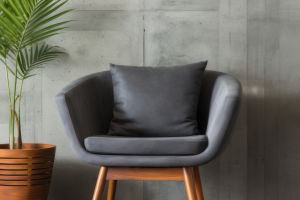Flower arrangement is an ancient and creative art form that not only creates visual beauty but also conveys emotions and thoughts through the combination of flowers.
This art form has rich expressiveness and a long history in different cultures.
From oriental flower arrangement to Western floral design, the importance of flower arrangement on various occasions cannot be ignored. It can not only be used as a decoration to beautify the environment, but it also carries significant cultural meanings.
The history of flower arrangement can be traced back thousands of years. The art of flower arrangement in China originated during the Tang Dynasty. Over time, it gradually evolved into an art form to express respect and reverence.
In the Song Dynasty, flower arrangements entered the lives of literati and became part of their self-cultivation. The Japanese art of flower arrangement, known as "Ikebana," originated in China but developed a unique style in its process of evolution.
Ikebana is not merely arranging flowers but also a philosophy that expresses the harmony between humans and nature through the shapes and lines of flowers.
In contrast, the art of flower arrangement in the West emerged during the Renaissance, especially in the Netherlands in the 17th century, when flowers became a significant element of painting and decoration, gaining popularity among European aristocrats.
Although flower arrangement may seem simple, it follows many principles and rules. First of all, balance is one of the basic principles of flower arrangement. Whether it is symmetrical or asymmetrical, the overall layout must present a sense of harmony that looks comfortable and natural.
Additionally, the proportion of flowers should be coordinated with the flowerpot. The height of the flowers is typically 1.5 to 2 times that of the flowerpot to ensure overall beauty. The focus is also an essential part of flower arrangement.
A successful arrangement often has a visual focal point, usually achieved with brightly colored or uniquely shaped flowers that attract the viewer's attention. Furthermore, rhythm is created through variations in flower height, density, and color, making the arrangement more vivid.
Color matching is crucial as well. The "three-color principle" is often used, meaning that a work should not feature more than three dominant colors to maintain harmony and unity.
The tools and materials required for flower arrangement are diverse. Common tools include flower shears, floral foam, and wire. Flower shears are used to trim stems and ensure smooth cuts so the flowers can better absorb water.
Floral foam helps keep the flowers in place and allows them to maintain their intended posture. The choice of vase is also important. Vases are not just containers for flowers but a critical part of the arrangement's overall style.
Common vases include ceramic bottles, glass containers, and baskets. Vases of different materials and shapes can significantly influence the arrangement's style.
As for materials, the main ones are, of course, various flowers—such as roses, lilies, tulips, and chrysanthemums. Additionally, leaves, branches, and berries can add layers and depth to the arrangement.
In different cultures and regions, flower arrangement shows diverse styles. Japanese flower art emphasizes simplicity and nature, characterized by clean lines and the use of space, resulting in works that are serene and restrained.
Western flower arrangement emphasizes color and layering, often striving for rich visual effects. In Western design, bouquets are fuller, colors brighter, and symmetry more apparent.
Modern flower arrangement combines Eastern and Western aesthetic elements, producing eclectic works that emphasize innovation and individuality.
The art of flower arrangement not only highlights the beauty of nature but also reflects human creativity and aesthetic abilities. It is a comprehensive art form that combines culture, art, and technique, capable of bringing pleasure and beauty to home decoration, festivals, and personal leisure.
Flower arrangement is an art that fosters a connection with nature. In today’s fast-paced life, it offers an opportunity to slow down, appreciate beauty, and experience tranquility. Through flower arrangements, people can rediscover beauty in life and find moments of peace amid their busy routines.


